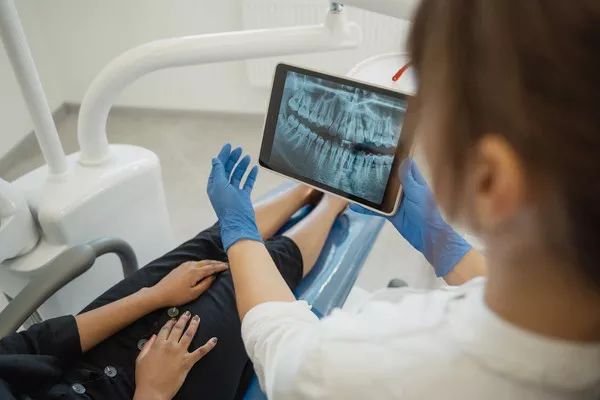A bright, radiant smile is often associated with good oral health and personal hygiene. However, many individuals struggle with discolored teeth, particularly yellow stains that can mar their smile. Yellow teeth can be a source of self-consciousness and affect one’s confidence. In this article, we will delve into the various causes of yellow teeth, ranging from extrinsic factors like diet and lifestyle choices to intrinsic factors such as natural aging processes and genetic predispositions. By understanding these contributing factors, we can take proactive steps to prevent or treat yellowing teeth and restore our smiles to their former glory.
I. Extrinsic Factors
Extrinsic factors primarily contribute to surface stains on teeth, resulting in a yellow appearance. These factors include:
Dietary Habits:
Certain foods and beverages contain chromogens, pigments that have an affinity for tooth enamel, leading to discoloration over time. Examples include coffee, tea, red wine, cola, berries, and deeply pigmented sauces. Acidic foods and drinks, like citrus fruits and soda, can also erode tooth enamel, making it more susceptible to staining.
Tobacco Use:
Smoking cigarettes or using other tobacco products exposes teeth to tar and nicotine, causing unsightly yellow stains. Moreover, tobacco use increases the risk of gum disease and overall oral health deterioration.
Poor Oral Hygiene:
Inadequate brushing, flossing, and regular dental cleanings allow plaque and tartar buildup, which can lead to tooth discoloration. Neglecting proper oral care promotes bacterial growth, further exacerbating the problem.
Medications:
Certain medications, such as tetracycline antibiotics, antihistamines, and high blood pressure medications, can cause yellowing of teeth as a side effect. It is imperative to consult a healthcare professional regarding potential dental side effects when taking these medications.
II. Intrinsic Factors
Intrinsic factors are related to the internal structure of the teeth and can contribute to yellow discoloration. These factors include:
Tooth Enamel Thinning:
As we age, tooth enamel naturally wears away, revealing the underlying dentin layer, which has a yellow hue. This natural process makes teeth appear more yellow over time.
Dentin Discoloration:
Dentin is the layer beneath the enamel and is naturally yellowish in color. When tooth enamel thins or becomes translucent, the yellowish dentin shows through, giving the teeth a yellow appearance.
Fluorosis:
Excessive fluoride intake during tooth development stages (generally during childhood) can lead to fluorosis, a condition that causes white or brown spots on teeth. Severe cases of fluorosis can result in yellow or even black staining.
Genetic Predisposition:
Some individuals may have an inherent predisposition to yellow teeth due to their genetic makeup. Genetics plays a role in determining the thickness and color of tooth enamel, which influences the overall tooth color.
III. Preventive Measures and Treatment Options
Prevention is key to maintaining a bright smile, but if yellowing occurs, there are several treatment options available. Here are some preventive measures and treatments to consider:
Good Oral Hygiene Practices:
Maintaining proper oral hygiene, including regular brushing, flossing, and dental check-ups, helps remove surface stains and prevents tartar buildup.
Dietary Modifications:
Limiting the consumption of stain-causing foods and beverages, rinsing the mouth with water after consuming them, and using a straw to minimize contact with teeth can help prevent further staining.
Professional Dental Cleaning:
Regular visits to a dental professional for cleanings and scaling can effectively remove surface stains and prevent tartar accumulation.
Teeth Whitening:
Professional teeth whitening procedures, such as in-office bleaching or take-home kits prescribed by dentists, can effectively lighten the tooth color by removing both surface and deeper stains.
Dental Veneers:
For severe cases of discoloration, dental veneers made of porcelain or composite materials can be placed over the front surface of teeth to provide a whiter, brighter appearance.
Lifestyle Changes:
Quitting smoking or using tobacco products not only improves overall health but also prevents further yellowing of teeth caused by nicotine and tar.
What foods turn teeth yellow?
Certain foods and beverages contain pigments that can contribute to teeth staining and yellowing over time. Here are some common culprits:
Coffee: Coffee contains compounds called tannins that can adhere to tooth enamel, causing discoloration. Additionally, its dark color makes it more likely to stain teeth.
Tea: Like coffee, tea contains tannins and can cause teeth staining, especially if consumed regularly and in large quantities. Black tea and herbal teas, such as chamomile and hibiscus, are known to have stronger staining potential.
Red Wine: Red wine is rich in chromogens, which are pigmented compounds that can attach to tooth enamel. The acidic nature of wine can also erode tooth enamel, making teeth more susceptible to staining.
Cola and Dark Carbonated Beverages: Dark-colored carbonated drinks, including cola and some energy drinks, contain chromogens and acids that can promote teeth staining.
Berries: While berries are packed with antioxidants and beneficial nutrients, they also contain deep pigments that can seep into tooth enamel and cause discoloration. Blueberries, blackberries, and cranberries are particularly prone to staining teeth.
Tomato Sauce: Tomato-based sauces, like marinara and ketchup, contain high levels of acidity and bright red pigments that can leave behind stains on teeth.
Curry: Curries, especially those made with turmeric, can impart a yellowish tint to teeth due to their intense coloring properties.
Balsamic Vinegar: Dark-colored vinegars, such as balsamic vinegar, have a high acid content that can erode tooth enamel and lead to yellowing.
Soy Sauce: Soy sauce, commonly used in Asian cuisine, has a dark color and contains compounds that can contribute to teeth staining.
Acidic Fruits: Citrus fruits like lemons, oranges, and grapefruits are highly acidic. Regular consumption of these fruits can weaken tooth enamel, making teeth more vulnerable to staining.
It’s important to note that moderate consumption of these foods and beverages is unlikely to cause significant staining. However, maintaining good oral hygiene practices, such as brushing and flossing regularly, rinsing the mouth with water after consuming stain-causing substances, and visiting a dentist for professional cleanings, can help minimize the impact of these foods on teeth discoloration.
Conclusion
Yellow teeth can result from a combination of extrinsic and intrinsic factors, ranging from dietary habits and poor oral hygiene to natural aging processes and genetic predispositions. By understanding these causes, individuals can take proactive steps to prevent yellowing and maintain a bright smile. From adopting good oral hygiene practices and making dietary modifications to seeking professional treatments like teeth whitening or dental veneers, there are various options available to restore the natural whiteness of our teeth. Remember, consulting with a dental professional is crucial to determine the most appropriate course of treatment for individual cases.
Related Topics:





























